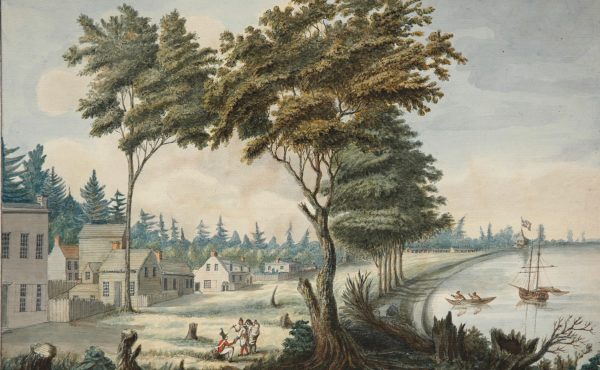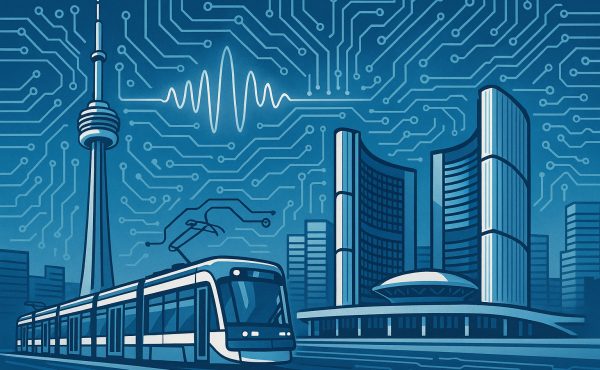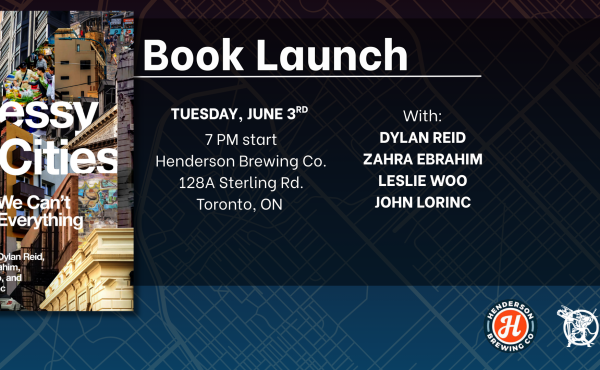
About 100 interested people met on Saturday for the Metronauts “unconference” to discuss ideas for transit in Toronto and the larger Toronto and Hamilton regions. It happily lived up to its mantra of not being “a complaints department”, but a “solutions playground.” While the crowd, expectedly, was largely made up of central Toronto residents, many arrived from places throughout the 905, including Caledon, Richmond Hill, Oakville and Mississauga. The site for the first of these events was at the MaRS Centre at University and College, a beautiful historic building blended with modern atrium and towers that are normally used for small medical science firms. It was a location that lent itself well for all the breakout sessions. It was also relatively easy for people to reach by public transit and bicycle.
This follows on the earlier TTC-focused Transit Camp over a year ago. Like the TTC Transit Camp, several officials from the GTTA (now re-branded as Metrolinx) attended, including Chair Rob MacIssac, which is encouraging. Several TTC planning staff also attended. Metrolinx was also the lead sponsor of the event, but took a hands-off approach, instead opting to listen to the ideas presented and the various discussions. Unlike the TTC Transit Camp, the session was wide-open, discussing mainly big-picture concerns appropriate with a session mandated to look at transit across a region of over 6 million people and ten different transit authorities.
There was no shortage of sessions proposed at the beginning by participants. One idea was looking at the potential for transforming GO Transit’s commuter rail network into a true regional rail system that would act as a backbone for the entire region (much like how the subway is the backbone to Toronto’s transit network) and encourage transit-orientated development. Another discussed ideas of transit signage, branding and marketing, another discussed ideas for improving bike infrastructure. Another dealt with the challenges to integrating the various transit systems together and an ideal fare structure to implement across the enture system with the new Presto Card. It is encouraging that the GTTA has already issued Green Papers on many broad areas that parallel some of the concerns brought up by participants. The various breakout groups generated more conversation and ideas than I expected, and it was clear that everyone was eager to get their ideas out.
With wi-fi set up at MaRS, the TransitCamp organizers set up a website that allowed people to write notes on their computers at each session and put them directly online for all to see. Anyone is welcome to comment on them, andI think this will be a valuable tool not only for transit staffers and planners to read what the public thinks, but also for future participants or those with a passing interest to get a sense of the discussions at these events. As more Transit Camps happen, it would be interesting to see how the topics change as we learn more specifics from Metrolinx.
It was interesting and very productive meeting new people. I had the opportunity to get new ideas and thinking about particular issues I have never thought about before.
There are a few challenges for this type of consultation. While Metronauts did bring out a large group with many different ideas, there were a few groups that were underrepresented, such as seniors. There will be six more of these around the Greater Toronto and Hamilton regions, the next one in the west in May. The challenge now will be to engage suburban residents and people who do not typically attend these types of events to take part. Hopefully, moving the regional transit camps around the region will help.
photo by Rannie Turingan




5 comments
I only heard about this after the fact, but I thought it was an interesting exercise. I really like their regional rail ideas.
The metronauts were surprisingly skeptical about Transit City, and I find myself agreeing with them. The plan seems half-baked, and there doesn’t seem to be a general agreement on its purpose: is it to run streetcar lines “where no streetcar has gone before”, or is it to provide rapid transit? And what about downtown? I think they hit the nail on the head here.
I was there! It was a great day!
Was there any talk about a “Demand Responsive Transport” for Toronto or the GTA? See http://en.wikipedia.org/wiki/Demand_responsive_transport. Basically DRT is a collection of smaller buses that don’t have any fixed routes and which are dispatched while already enroute by sophisticated software within minutes of placing a request call – sort of a collective taxi with a very smart control system directed by GPS.
Such a system seems extremely customer oriented and, while perhaps not as efficient as larger buses operating on fixed routes, it addresses a lot of the reasons why people dislike transit, especially in the suburbs (awkward to get to bus stops, freezing in the cold etc.). These minibuses could feed directly into the subway system or transit city routes, or be used for point-to-point travel.
I think they have such systems in Denmark and the UK.
This page about “MyTTC” sounds … great. Check it out:
One of the largest issues that they’ve had, and are likely to continue to have, is getting data from the TTC: many transit authorities are notoriously miserly with their data, in spite of the fact that it’s created mostly with public funding. For MyTTC, they used the route and schedule data that’s available on the TTC site, much of it captured manually (and painfully), but TTC hasn’t been willing to share any data in a more easily-ingestible form, or to share the data that will soon be generated by global positioning systems on surface vehicles. This, of course, is a political problem rather than a technical problem, and likely others will need to be involved to help resolve this.
MyTTC is attempting to create a platform where the data is fully open (although they are not, at this time, making the code open source): they will be providing full XML and JSON APIs, SQL dumps of the data, and GTFS (Google Transit Feed Spec). In fact, their contacts at Google have said that Google Transit will accept their data in place of TTC’s, likely because it’s more accessible and complete. They don’t plan to monetize the APIs, but would rather have other sites export the data and use it for their own purposes directly.
Metrolinx — are you listening?
I was only able to get to a bit of it, with a few copies of a page from the 1993 WWLRT EA (none of my text/comments) that says it’s not a good enough value to build though if there were a more direct line in, then maybe. So skepticism about Transit City is wise, and there’s essentially nothing in it for the core of the City except for paying for it while having less service (more of less service with the new, bigger streetcars too!)
I’ve been positive in offering a Front St. transitway route out to Etobicoke for the last five+ years, but I’ve become somewhat dour to see it substantiated in the WWLRT EA of 15 years ago as being worthwhile of study, which hasn’t happened. Something about the Front St. Extension….
which never looked at transit options…
hey, what’s a few hundred million eh?